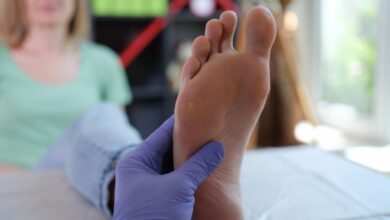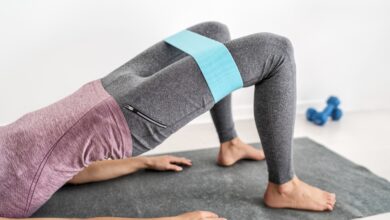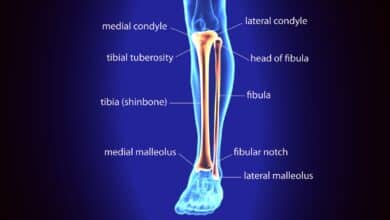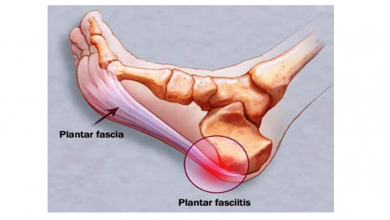The career technique as preventive treatment of injuries
Running Therapy Center tells us in this article how correctly training running technique means avoiding injuries but can also heal some of them
Our way of running depends on various factors or components, such as our anatomy, motor learning, neural connections, hydropneumatic volume, accumulation of injuries, stiffness of bio-articular tissues and muscular imbalances. When we observe an alteration in gait, one or more of these factors are the cause.
With training and day-to-day life, if our locomotion system loses the possibility of continuing to adapt, without any doubt, this alteration will lead to an injury that will surely end up affecting the gait system. That is to say, good running technique is synonymous with the fact that the system, with all its components, is effective and efficient. A good career technique will have a positive influence on the factors on which the march depends. Therefore, a proper career technique can not only prevent injuries, it can also eliminate (cure) some injuries.
I include the career technique in what I call Active Treatment. Within the Active Treatment I include everything we need to compensate for the systemic imbalances in our sports activity. I call this active treatment the FNR Method. FNR is a systemic neuromuscular activation and reprogramming methodology that, through certain algorithms, tells us which systems or patterns must be activated, reprogrammed and what exercises we need to do so.
CAREER TECHNIQUE AND ITS RELATIONSHIP WITH INJURIES
- Standing posture, aligning shoulders, hips and ankle with slight forward inclination without flexing the waist: it allows an optimal relationship of the body's center of gravity with the foot support, favoring the propulsion system. A non-upright position is usually synonymous with muscle retractions, problems in the hydropneumatic support system (abdomen-thorax), pulmonary ventilation will be limited. A non-upright position can lead to injuries to the entire spine, pubalgias ... Excessive inclination can cause periostitis and overload of the tibialis anterior.
- Hip in slight anteversion: allows a support close to the center of gravity and a mid-forefoot entry to the ground. An excess of anteversion can produce hip impingement, knee injuries, lumbosacral hinge and the muscles that cross it. An excess of retroversion can produce pubalgias, injuries to the lumbosacral hinge and hamstrings and produces a tendency to enter the heel to the ground.
- Shoulders and arms relaxeds: it will allow a more economical race, favors the work of the respiratory muscles and avoids overloads in the cervical area.
- Height of knees: they should not be excessively high. At lower speed, lower knees, at higher speed, higher knees. Running with very high knees may seem very aesthetic but will produce more phase of flight in race, more phase of braking and overworking of the psoas.
The knee should not stretch before reaching the ground, it should maintain a slight flexion. This bending is necessary to enter close to the center of gravity line, to avoid sudden oscillations of this and it is necessary for the damping system in the race. Stretching the knee will force us to get too close to the heel and its consequences.
If there is something that differentiates the race from the march, in the first there is a phase in which none of the feet is on the ground, the race is like a succession of jumps, in the flight phase, speed is lost. The stride has an optimal length, wanting to run with a longer stride will increase the phase of flight, increase the oscillation of the center of gravity, increase the braking phases, force us to use more force to reposition the center of gravity in your trajectory line.
The foot is usually on the ground around 250 milliseconds and the muscle response capacity takes about 35 milliseconds. Every time I reach the ground the body experiences a shock from an impact that can not be fully absorbed. The more the flight phase increases, the more the impact of the tread increases. Without any doubt, he will expose us to suffer more injuries. That is why the triple jump is so harmful.
- Foot support: Support with the mid-front part of the foot. The support, in part, depends on the drop of the shoes, the greater the drop, the more tendency to enter the heel to the ground. Excessively advancing support will increase the pressure at the metatarsal level, which may cause metatarsalgia, microneuromas, metatarsal fractures, soleus overload, calf muscles, Achilles tendonitis and overwork on the patellar tendon. Entering from the heel to the ground can cause fasciitis, anterior tibial strain, Achilles tendonitis, hamstring injuries, and pelvitrochanteric musculature (eg, pyramidal syndrome).
In the race, the more you enter the heel, the more the braking phase increases. The racing shoes of a sprinter force to enter the front of the foot to avoid this phase to the maximum. Supporting the front part of the foot decreases the braking phase and stretches the Achilles tendon, increasing the reactive force of the latter and with it the propulsion. But be careful, this energy has a high cost.
Something that is heard a lot in speed is "run with the foot armed", place the foot in dorsal flexion before reaching the ground. The objective of this is to increase the muscular pretension before reaching the ground, forcing the foot to contact the front area and close to the center of gravity. This is unnecessary, since speed spikes already force you to do so, a natural race with a zero drop forces you to support with the mid-front area. In the race, a small part of braking is necessary to be able to propel the center of gravity forward, the excess of “armed foot” forces to raise the knee to avoid entering the heel to the ground, the excess of dorsal flexion in the eccentric phase of the tibialis anterior and extensors of the foot can trigger periostitis and tibial pain.
- The foot must be a very elastic element (not to be confused with flexible). Must have ability to stretch and quickly recover its initial shape. It must have an immediate response capacity, and be very adaptable at the same time as stable. In very few milliseconds the foot performs the following functions:
When in contact with the ground, the foot must be sufficiently long to be flexible, mobile to cushion part of the impact and be able to adapt to a possible irregular surface.
In the middle position, when it is fully on the ground, the foot must inform the rest of the system of its position for a quick muscular response, be balanced and elastic to become a rigid lever that initiates the propulsion.
The foot must supinate itself to become rigid and to be able to initiate the propulsion that will arrive until the fingers.
- The career cadence: It will depend on the morphology of the subject and the pace of the race. Someone who is 1,75 m tall and runs at 4-4,20 minutes approximately 1000, his cadence will be approximately 28-30 steps in 10 seconds, 180 steps per minute. An athlete who runs 100 meters in 10 seconds will not have this cadence at all, unless he is able to stride more than 3 meters.
HOW TO CARRY OUT THE CAREER TECHNICAL EXERCISES?
The exercises used must take into account the function and mechanism of the system to improve, repair and adapt possible errors that eventually lead to injury.
Strength exercises they should have a progression so that they are as specific as possible to the sporting gesture. Not only must the same muscles work, you have to incorporate movement patterns as similar as possible to the race to be able to use the nervous system in a similar way.
The dose of exercises is of utmost importance for its effectiveness. As a complement to training, a minimum of three times a week and as an injury prevention measure should be used twice a week. As a treatment two-three times a day so that they can exert a motor adaptation response.
The exercises should use the Same type of muscle contraction as in the race.
You have to perform exercises that force the body to stabilize before a monopodal impact.
"Core" stability exercises that they look for the co-contraction of the lumbo-abdomino-pelvic musculature. These exercises should maintain postural alignment during functional movement.
Exercises that increase body awareness
Proprioceptive exercises that activate balance systems.
The exercises should normally be done with 10-30 repeats and 1-3 series. Static exercises must be maintained between 10 and 60 seconds.
First we should increase the coordination of the exercise, then the resistance to exercise and then the intensity of the exercise.
Avoid boring, change of exercises, it is very important to have the neuromuscular system well awake.
The execution speed once the exercise is controlled must be similar to the running speed.
Repeat, repeat, repeat. That is the key.
Author: Ferran Espejo, physiotherapist and specialized osteopath
More information: http://runningtherapycenter.com/
There are no previous results.




























